A Look at the Mixtec Semasiographic Writing System
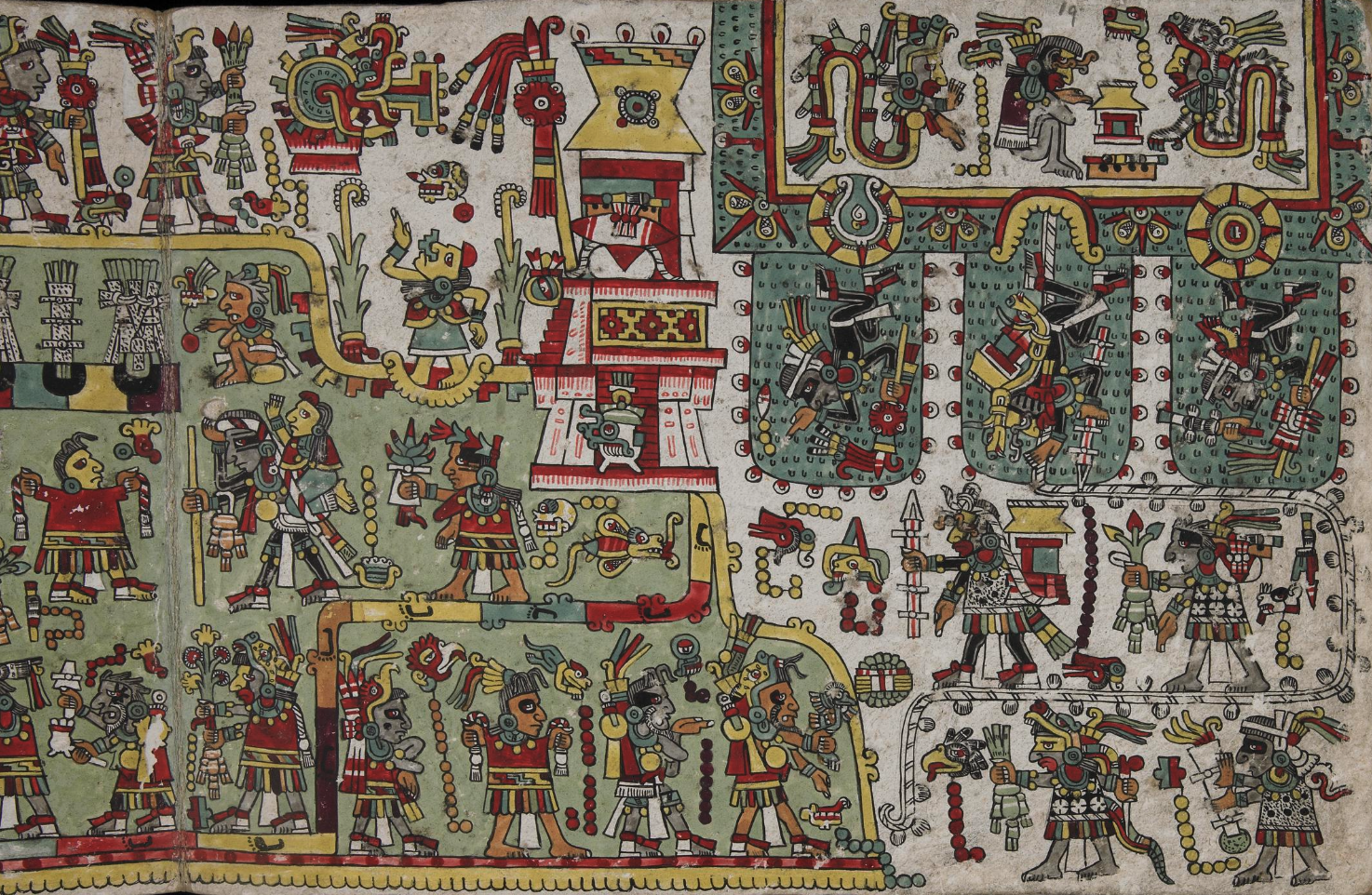
The Mixtec are a group of indigenous Mesoamerican peoples inhabiting a region of modern Mexico known as La Mixteca. Located in the modern Mexican states of Oaxaca, Guerrero, and Puebla, remnants of the Mixtec civilization remain today, but their peak came in the 11th century, continuing into the following years. Like most Mesoamerican civilizations, the Mixtec were conquered by the Spanish and their allies in the 16th century.
Before the Spanish conquest, many Mixtec city-states competed with one another, as well as the Zapotec kingdoms. Important cities in the ancient Mixtec civilization included the capital of Tilantongo, along with Achiutla, Cuilapan, and Yucuñudahui. The former Zapotec city of Monte Albán is famous for its significant buildings and architecture that show unique aspects of Mixtec culture. At its peak, the Mixtec civilization was one of Mexico's most culturally rich empires. One of the most expressive aspects of Mixtec culture is their codices.
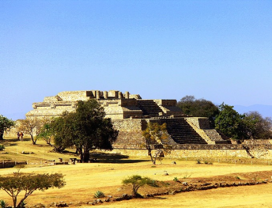 Figure 1 - The west side platform located in Monte Albán
Figure 1 - The west side platform located in Monte Albán
What are Mixtec Codices
Mixtec codices are semasiographic images depicting the historical tales of the Mixtec people in deerskin while using the “fold-book” form. The form is characterized by folded pages in an accordion-like form. Semasiographic writing systems are those that use images that convey meaning, or more simply writing with signs. One of the most famous stories from the Mixtec codices is about Lord Eight Deer, who was a warrior named after the day he was born in the Mixtec calendar. His personal name being Jaguar Claw, Lord Eight Deer successfully conquered and united nearly all of the Mixtec civilization.
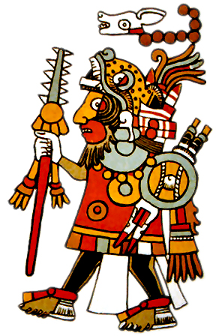 Figure 2 - Lord Eight Deer Jaguar Claw
Figure 2 - Lord Eight Deer Jaguar Claw
Codices contain everything from origin myths to the accounts of the lives of influential figures during the social development of the Mixtec civilization. The Mixtec referred to codices in at least three different ways:
| Term | Meaning |
|---|---|
| tonindeye | histories of lineages |
| tnuhu niquidza yya | an account of rulers' deeds |
| ñee ñuhu | sacred skins |
Based on these descriptions of the codices, we can tell that they were more than artistic depictions of events in Mixtec culture. These codices were sacred stories that explained the divine origin of rulers and the rituals performed in daily Mixtec life. Mixtec rulers considered themselves descendants of the gods who are usually considered to be their creators. Because of this belief, the yya (Mixtec for king or lord) was the only figure who could possess symbols of power and act as an intermediary between the gods. Along with their depictions of wars and conquests, codices were also used to legitimize rulers since they showed the names of the fathers, sons, and descendants of rulers. They also showed the lineage of specific lords related to the brides of many rulers. As an example, Lord Eight Deer had many wives and there is a list of his spouses below:
- Lady 13 Serpent Flowered Serpent (from Red and White Bundle)
- Lady 6 Eagle Spiderweb Jaguar (from Chacaltongo)
- Lady 10 Vulture Brilliant Quechquemitl (from Tilantongo)
- Lady 11 Serpent Jaguar Flower Turquoise Teeth (from Cholula)
- Lady 6 Wind (from Cuyotepeji)
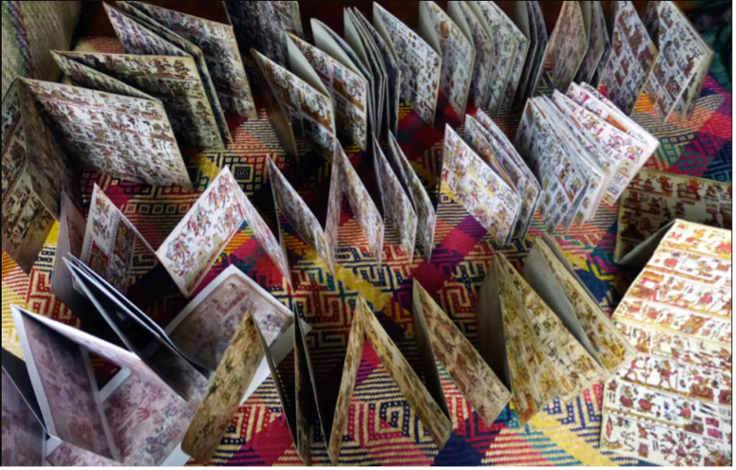
Figure 3 - The six surviving pre-Hispanic Mixtec codices
The Mixtec codices from pre-Hispanic times consist of the Zouche-Nuttall, Vindobonensis, Colombino-Becker, Bodley, Waecker-Gotter, and Selden. The Codex Selden was finished in 1556 but is still considered to be pre-Hispanic since it preserves strong indigenous traditions in the techniques used for its pictographs. While they differ slightly in content, these codices are similar in that they lack a strong European influence.
What stories or content did each Codex Contain?
The Codex Zouche-Nuttall was a record of the genealogies, alliances, and conquests of many 11th and 12th century rulers of a small Mixtec kingdom in the Oaxaca region of Tilantongo in Southwest Mexico. The ruler that is primarily discussed in this Codex is Lord Eight Deer Jaguar Claw. The Codex Vindobonensis contained 10 sections describing the mythological genealogies of Mixtec gods as well as a list of Mixtec rulers and priests. The Colombino-Becker codex dealt with the genealogy, marriages and bellicose conquests of Eight Deer Jaguar Claw. The Codex Bodley was a complete review of family relationships among the dynasties of the main cacicazgos(community kingdoms) in the Mixteca Alta region, which was used by many in the field of Historiography. The Codex Wacker-Gotter witnessed the transition between Pre-Columbian times and early colonialism in Mexico. There is also a genealogy section that comprised a record of 26 generations that lived between 970 and 1490 AD. Finally, Codex Selden was an account of the genealogy of the Jaltepec dynasty from the tenth to the 16th century. Despite being completed after the arrival of Spanish conquistadors to the Mixtec region, it is still considered one of the six pre-Hispanic Mixtec codices.
Reading Codices Scene-by Scene
While not traditionally read like modern-day books, Mixtec codices were read in a unique way. Codices were read right to left following the red lines. To better understand this, look at the figure below taken from the codex Zouche-Nuttall.
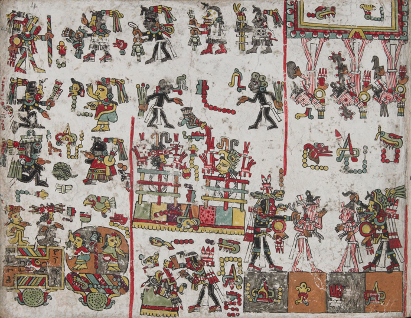 Figure 4 - The Fourth page from the Zouche-Nuttall Mixtec Codex
Figure 4 - The Fourth page from the Zouche-Nuttall Mixtec Codex
Notice how there are red lines that separate the page into 3 sections. Based on these red lines, Mixtec would separate scenes and sections of each codex. To read the page above, one would start at the top right where there are three characters dressed in red-striped clothing. Then, the reader can look straight down until they see the bottom image with two of the same striped figures standing. Once this first third is read, then we read to the left and up, turning 180 degrees to read the middle third of the page. One of the best analogies for this method of reading is cutting grass using a lawn mower. To do this, someone would usually section mow straight to create a line of cut grass and then reach the end of the lawn where they would then turn around and mow in the opposite direction, but right next to the section of grass they just mowed. One of the best resources for understanding this comes from Picture writing from ancient southern Mexico; Mixtec place signs and maps by Mary Elizabeth Smith. A page with some guides for each respective Codex is posted below the example page from the Nuttall. Notice how these patterns almost form a zig zag when reading.

Figure 5 - From Mixtec places signs and maps
Understanding Mixtec Day Signs and Time Notation
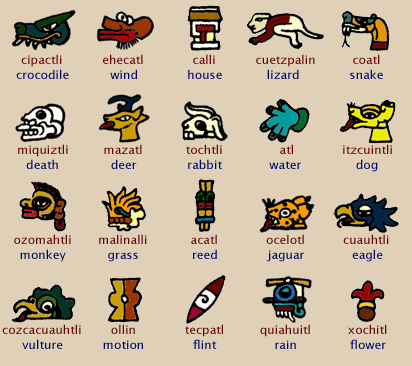 Figure 6 - The 20 Mixtec Day Signs
Figure 6 - The 20 Mixtec Day Signs
The Mixtec symbols for different days are identical to their Aztec counterparts in that both civilizations used a sacred calendar consisting of day signs. In both of these calendar systems, there are 20 different day signs and a year which lasted 260 days. Additionally, there are 20 periods of 13 days which are called trecenas in Spanish. This is based on the Spanish trece, which means thirteen and is similar to how docena, or dozen is based on the number 12 which is doce. This particular calendar system of 13 day periods with 20 different day signs comprised the Mixtec and Aztec sacred calendar.
The Mixtec had 2 calendar systems which were used together to form a calendar round. Along with the 260 day calendar, there existed a 365-day solar calendar, but this calendar was not used for recording dates; that was the primary purpose of the sacred calendar. The two calendars would interlock every 52 years, and the math behind this is quite simple yet interesting: the smallest number divisible by both 365 and 260 is 18980, which is 52 years. Historical events in Mixtec manuscripts and monuments are dated by a year in the Calendar Round and a day in the sacred calendar. In Figure 6 above you can see the 20 Mixtec Day signs with their Nahuatl translation in red and the English equivalent below it in blue. Nahuatl was the language of the Aztecs and this example uses the language since the Mixtec used Aztec day signs. If you look at the Aztec Piedra del Sol sculpture below you can see all 20 of the day signs in the inner ring surrounding the face of the sun in the center of the rock.
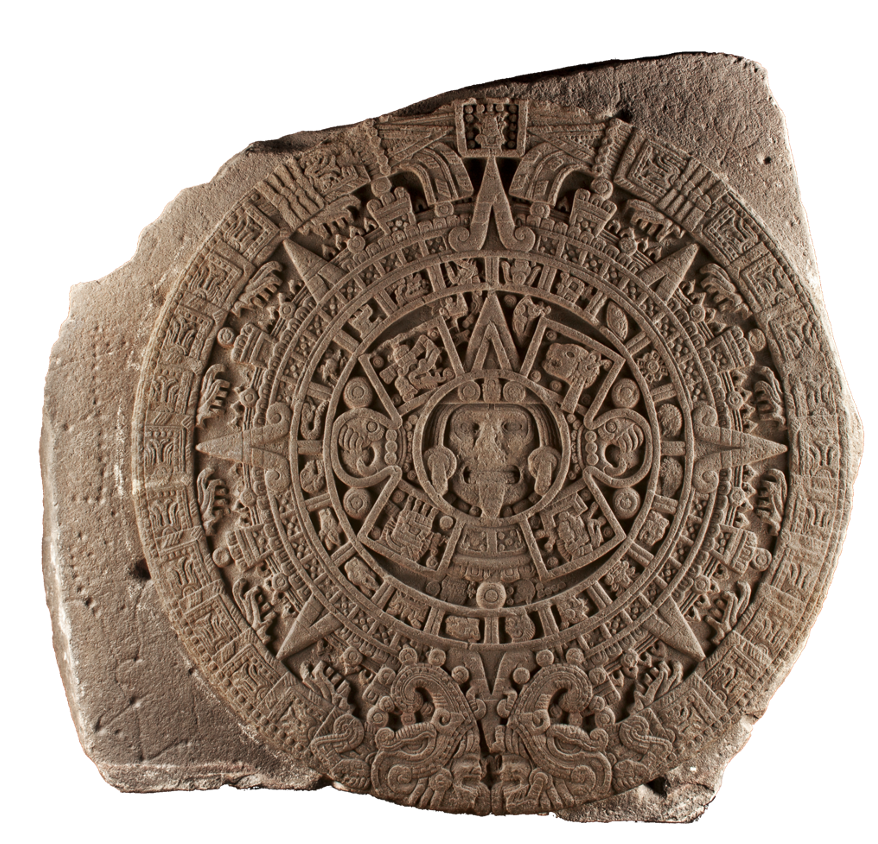
Figure 7 - The Aztec Piedra del Sol or Sun Rock
The Piedra del Sol or Sun Rock pictured above is a physical depiction of the Aztec and Mixtec sacred calendar. The significance of the 52 year cycle in this calendar cannot be understated. The Mixtec believed that every 52 years, a new sun would be reborn, thus causing a reset in the calendar and forming a cycle. Each 52 year cycle was made up of 4 13-year periods that each had their own sign. The year and day signs were the primary methods of recording historical events in the Mixtec civilization.
Techniques for Scene Segmentation
One of the primary issues regarding research related to Mixtec codices is that few people are knowledgeable about how to read or interpret the art form outside of native speakers. Most of the modern interpretations and commentaries on Mixtec codices are from experts in the field who have conducted intensive research on the subject matter. Reading some of the literature can help us understand how the codices are divided into sections and scenes for readers. Usually, a scene includes one or more characters, or a place or location, as well as a date to specify when the event took place. There are some examples of scenes below:

Figure 8 - Samples of Segments from the Zouche-Nuttall
If you notice, each scene has a character or place which is usually a city. Most cities or sacred places in codices are shown with a mushroom-shaped base. The scenes also include the names of the figures and occasionally something that looks like a star or A and O intertwined. This is the date in the Mixtec sacred calendar. Some scenes do not include this because the date had not changed from the previous scene.
Summary
At the UF Data Studio, we aim to find ways to help users interact with many different forms of data throughout the data pipeline. Because of their visual nature, Mixtec codices offer visual data that can be used for processing and other operations. Using real samples from Mixtec codices to train deep learning models, we strive to develop applications where users can create their own Mixtec narratives based on whatever prompts they use. This is a very deep field with many different aspects to cover, but our developments are exciting for machine learning, artificial intelligence, and the data pipeline as a whole.
Works Cited
-
“Codex: British Museum.” The British Museum, www.britishmuseum.org/collection/object/E_Am1902-0308-1. Accessed 2 Aug. 2023.
-
Famsi. “John Pohl’s - Ancient Books - Mixtec Group Codices.” FAMSI, www.famsi.org/research/pohl/jpcodices/pohlmixtec3.html. Accessed 2 Aug. 2023.
-
Ortega, Guadalupe Remigio. “The Environmental Injustices of Forced Migration.” Edge Effects, 25 May 2020, edgeeffects.net/the-environmental-injustices-of-forced-migration/.
-
Sanchez, Graciela. “‘Codex Corner’: Page Reading Order.” Mexicolore, www.mexicolore.co.uk/aztecs/writing/codex-corner-reading-order. Accessed 2 Aug. 2023.



